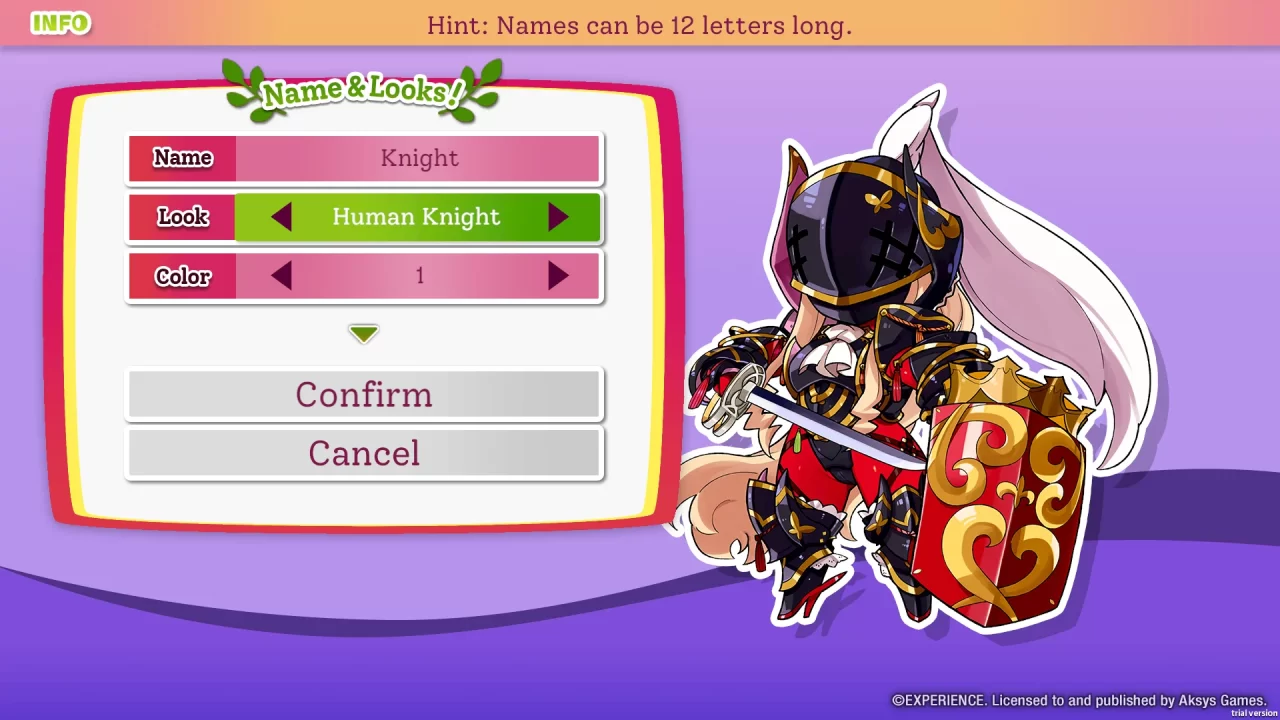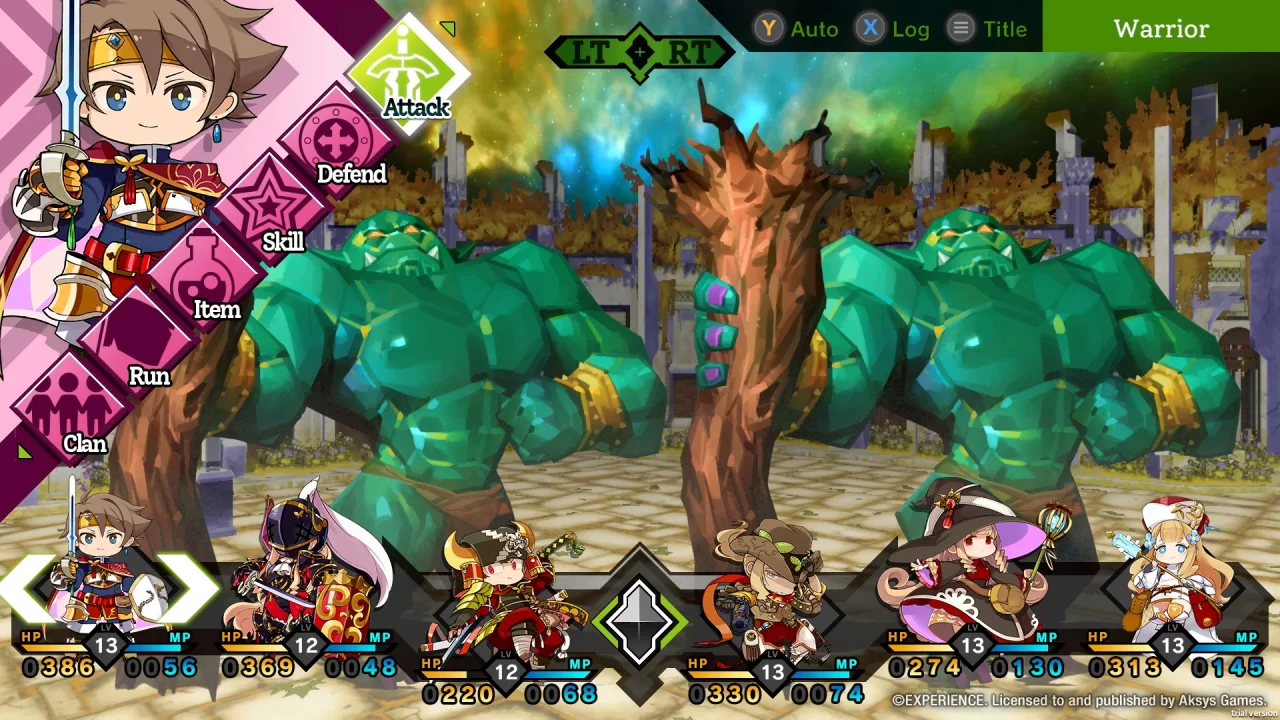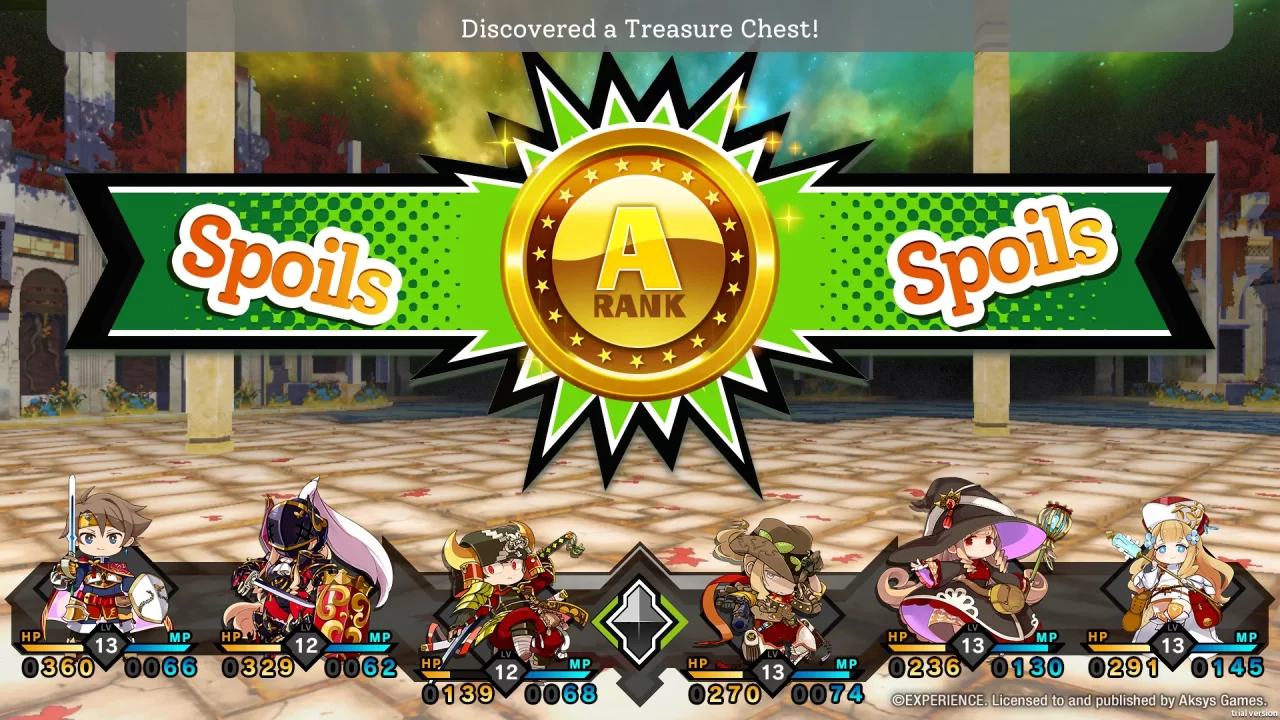If any developer is making a name for themselves with first-person dungeon-crawlers, it’s Experience, Inc. First, they hit western shores on the Playstation Vita with Demon Gaze, seeking to put their own spin on the tried and true, old-school formula of the classic DRPG. Whether that’s experimenting with an emphasis on storytelling (Demon Gaze, Demon Gaze II) or offering unique settings (Undernauts, Stranger of Sword City), I’m always excited to test out their newest title and see what they’ve done to shake up the dungeon-delving and party-building experience. Color me surprised when I first fired up Mon-Yu and was greeted with one of the longest game titles I’ve ever witnessed (Mon-Yu: Defeat Monsters and Gain Strong Weapons and Armor. You May Be Defeated, But Don’t Give Up. Become Stronger I Believe There Will Be a Day When the Heroes Defeat the Devil King).
Unfortunately, the paragraph-length title is the most notable aspect of this by-the-books DRPG. Fantasy setting? Check. The same familiar mix of classes, including knights and warriors, mages and clerics, and ninja and samurai? Check. A single hub town with a shop and inn? Check. Every element you’d expect to find in your average DRPG and not a single surprising or novel aspect to be found. Incredibly, exceedingly, excruciatingly bog-standard. It seems that after working in such a niche genre for so long, Experience decided to play it safe and create a streamlined dungeon-crawler with the rough edges sanded off to avoid alienating potential genre newcomers. Unfortunately, the result is both mind-numbingly dull for genre aficionados and without anything truly noteworthy to help it catch the attention of those unfamiliar with the genre.

The game starts with a long text scroll across a beautiful static image of a dragon looming over the land. This land is called Tir Na Balc, a land of fairies and magic, which the evil Devil King has made his dominion. You lead a group of Otherworld adventurers summoned by the Queen of Fairies to assemble the Einherjar, ancient treasures held by each of the Devil King’s disciples in their various lairs. As such, you form a party of six members of various classes and begin exploring the dungeons to fight the boss and obtain the associated treasure for the queen.
The first choice you make is which Type you wish the game rules to operate under. Type A, or Carefree Style, is the most forgiving option. The level cap is higher for each dungeon and use of the minimap, and the full map is permitted from the start. Type B, or Standard Style, lowers the level cap per dungeon and permits use of the minimap but not the full map until you find the floor’s Map Beetle. Type C, or Challenging Style, doesn’t allow for minimap or full map use until you find the map beetle and has the lowest level cap. It’s clear that these options are meant to ease in new players while still providing a hefty challenge to veterans. I went with Type B and ultimately found the restrictions did little to make the game suitably challenging and only made the early stages of exploring a new dungeon floor tedious. Map Beetles tend to hide in rather random locations and don’t feel very rewarding once found. Since each dungeon is relatively small, it’s not even all that difficult to navigate without the map. However, making sure you’ve cleared each section can become a chore without it. This is just one example of how Mon-Yu attempts to cater to both newbies and returning players and fails at both.
Party building is similarly at odds with itself. While the game does provide some small hints about classes and job changes, the player is left to their own devices for the most part. This didn’t present an issue for me, but I could see how someone new to DRPGs might make a suboptimal party and quickly lose interest when they can’t progress. There are a fair number of classes to choose from, and once you’ve selected one, it’s time to allocate the initial bonus stats. The game explains basic details of each stat, but there isn’t much guidance around which stats are most important or what spread is useful, so much so that a new player could easily misallocate stats.
This problem continues once the party begins to level up, as skills are limited by character level and you only see the current skills the character can learn, with a couple skills they can learn up to the current level cap. I believe this happened to eliminate some of the choice paralysis a new player can get when facing a full skill tree, like in Etrian Odyssey. The problem is that this limited information set makes it difficult to plan out a character build. The only option available is to put the skill points you currently have into the handful of available skills or sit on them and have an underpowered character until the skills you actually want are revealed. That also inhibits the ability to efficiently allocate stat points on level up, as you may not know a certain skill scales from a particular stat until you’ve already allocated quite a few stat points.
Since your choice of skills is so limited, early-game party strategies are stringent and become rote very quickly. I was approached the first few floors and bosses with basically the same strategy for every encounter, and grew bored quickly. As you progress to the later dungeons, things start to open up more, and some fights may require you to change classes. One nice thing about class changes is that you get to reallocate those initial bonus stats and tailor the character to a new role. You can then switch them back to their original role with no penalty. This does encourage experimentation, but it also means you never really have to commit to a character build or party. There aren’t any tradeoffs, so there isn’t much risk/reward to be found, and the result is that party building becomes rather unsatisfying.
The same can be said for the combat. It’s a standard turn-based affair with a front row of three units and a back row of three. Parties likely consist of a tank, sub-tank, and physical damage dealer in the front row and a healer, magic damage, and ranged/support unit in the back. You can mix and match these roles, but combat encounters will mostly stay the same throughout. By the third dungeon, I was already seeing palette swaps of enemy types, and the enemies on offer here are relatively simple in abilities and tactics. Eventually, the enemy groups and skills become a bit more varied, but it’s a slog getting there. By that point, your party will already be so powerful that most enemies won’t be much of a threat despite the level cap per dungeon. All the level cap really serves to do is limit the amount of skills your party can access, which makes combat feel monotonous on each floor until you reach the next one, rinse and repeat.

Death in Mon-Yu is hardly a consequence at all, since upon death you simply return to town with all your items and experience. Furthermore, your max health and magic points increase each time you die. I’m sure this was meant as a concession for newcomers, but it serves to make an already easy game even easier. In addition, you begin receiving clan skills after the second dungeon. These are powerful, party-wide skills that can turn the tide of battle yet can be used every other turn. These abilities pretty much break what little challenge the game had, and by the time I faced the last few dungeons, the game had begun to feel monotonous.
One thing I commend Mon-Yu for is the dungeon layouts and interactivity in the dungeons. There are some neat little puzzles necessary to progress, and the game mixes things up with exploration abilities. However, the execution of these elements pales in comparison to other DRPGs. For example, you receive the ability to break through walls early on. Unfortunately, only particular walls can break, noted by the presence of a lamp hanging on the wall. Another DRPG released this year, Labyrinth of Galleria, also has a wall-breaking mechanic. In Galleria, nearly any wall is breakable, and it is up to the player to experiment and discover new route locations with the risk of falling into unseen pits. Since Mon-Yu is so restrictive, it doesn’t really convey the same sense of danger and discovery that serves as the lifeblood of good dungeon-crawling games. The sense of scale is hampered by the limited size of the dungeons as well. There are no massive, multi-floor labyrinths here, and it is immensely disappointing.
Mon-Yu sets out to make the first-person dungeon-crawling genre more approachable and friendly for new players. It does achieve this at some level , but in doing so it removes a lot of what makes the genre appealing in the first place. I can’t recommend this game to someone who wants to get into DRPGs, simply because there isn’t anything noteworthy here that will get its hooks into you. For fans of the genre, stick to Experience, Inc.’s other titles and stay far away from the land of Tir Na Balc.



